Create Excel and PDF documents from Plumsail Forms in Power Automate
This article describes how to create PDF documents from an XLSX template on Plumsail Forms submission with the help of Processes in Power Automate (MS Flow). It may help you to automize the generation of documents like applications, requests, orders, etc., in your company.
Processes are a Plumsail Documents feature with an intuitive interface for creating documents from templates.
With Plumsail Forms, you can design elegant, responsive, and highly customizable forms for SharePoint Modern UI or any web page. In our example, we will collect data from a Web Form, apply it to our template and generate a new PDF document with the help of Processes.
Create a Form
We have already designed a form for a stationery and office supplies request. Here is our result form:

You see, that the form includes information:
information about the employee who makes the order – here we use mostly text boxes, for the department - a dropdown
the order content – we use a DataTable for adding multiple lines to the order
under the table with order items, we place a multiline textbox for special instructions
and, finally, a submit button
You can use our ready form template for a stationery order request as well.
Firstly, register an account on plumsail.com.
Open Forms and select Public Forms - Design a form directly in your browser.
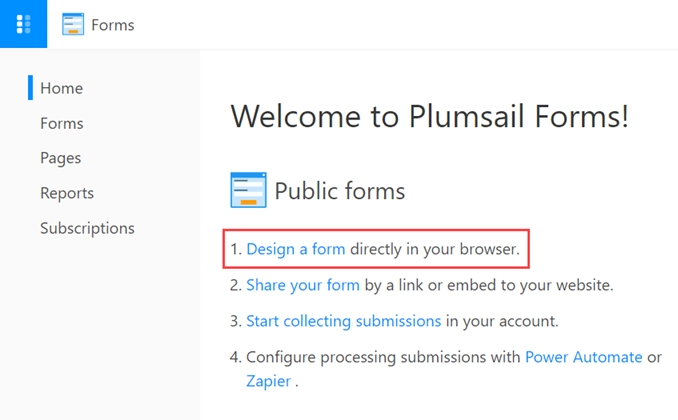
Import the downloaded JSON file and save the form.
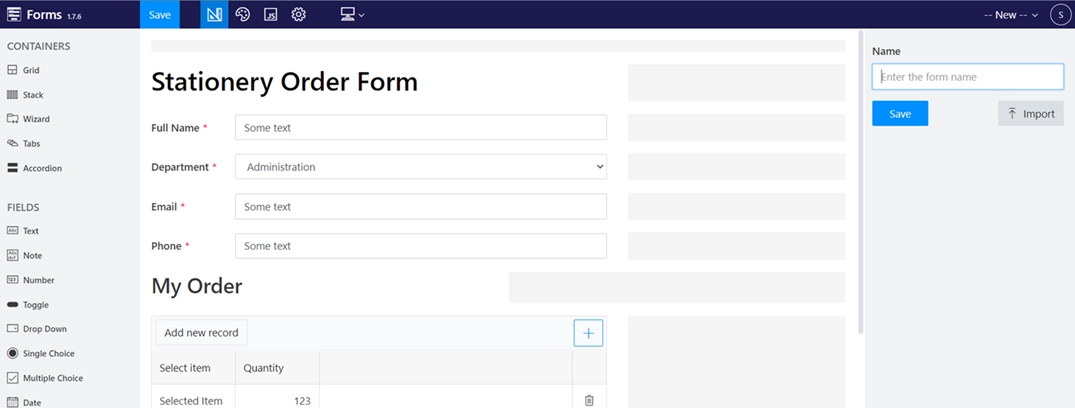
To create your own form, follow this link to learn more about how to design Plumsail Web Forms.
Understanding Internal Names of Form’s fields
It’s crucial to understand the Internal Names of Form’s fields. They must correspond to tokens in a template. You can set internal names for Form’s fields in its general properties:
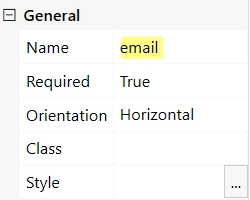
Our data table’s name is items. And its columns have their names as well - Product and Quantity.
In our XLSX template, we’ll put such tokens {{items.Product}} and {{items.Quatity}}. The templating engine will iterate through all objects in the array to render them and add the rows automatically.
Configure the Process
Now we need to create and configure the Process which will generate stationery requests in PDF format based on data from our web form submission.
Create a new Process
Go to the Processes section in your Plumsail account.
Click on the Add process button.

Set the Process name. As we’re going to generate PDF stationery orders from an Excel template, select XLSX for the template type.
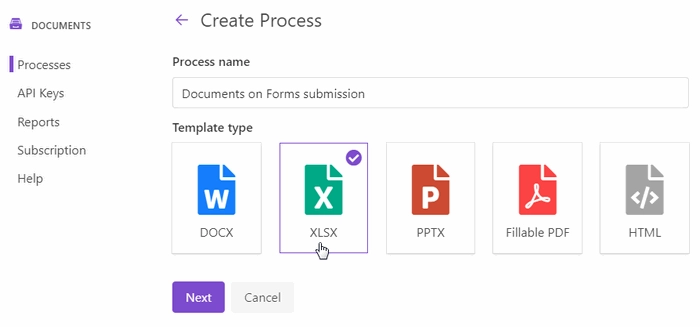
Configure a template
Once you’re done with the first step Create Process, press the Next button, and you’ll proceed to the next step – Configure Template.
It includes two substeps:
Editor;
Settings.
In Editor, you can compose the template from scratch or upload a pre-made one. It’s also possible to modify the uploaded template online.
Feel free to download an XLSX stationery order template that we have already prepared:
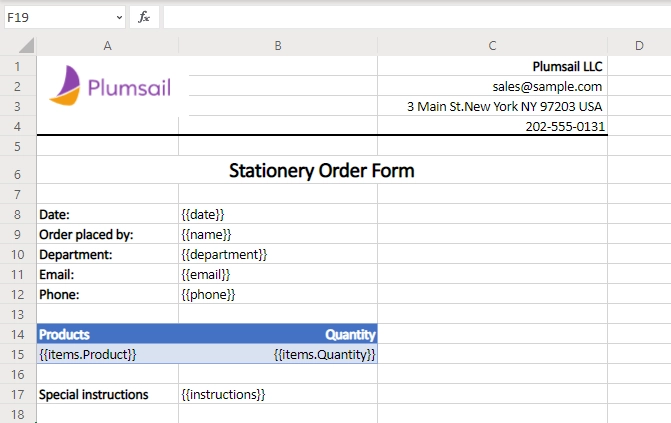
Then upload it to the process.
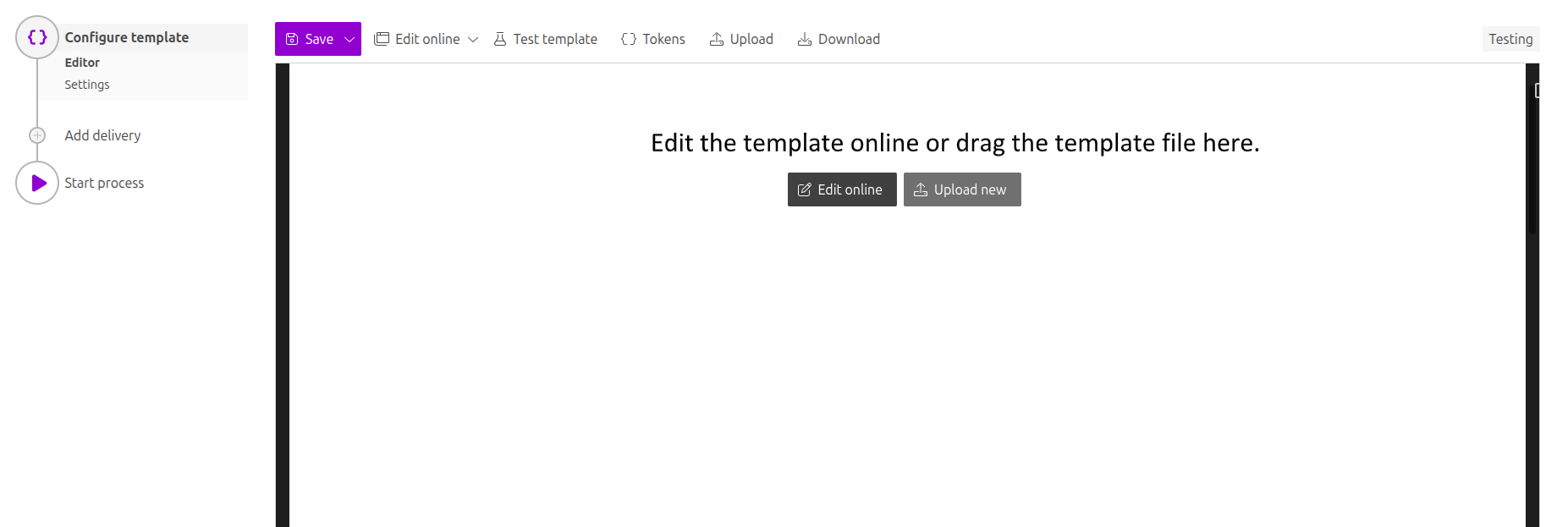
Templating syntax
When creating your own templates, mind the templating language. Plumsail Excel XLSX templates use a different approach than most other templating solutions. It uses a minimal amount of syntax to make your work done.
In short, the templating engine thinks that everything between curly {{ }} brackets is variables where it will apply your specified data.
Read this article to get familiar with the templating engine.
Test template
To check how the document will look at the end, click on the Test template button.
You will see the dialog where you can fill in the auto-generated testing form. Form fields are created based on tokens from your document template. You can adjust the look of the testing form by changing token types.

It’s testing. We’re going to apply the data from the web form to our template.
Once you’ve tested the template, press Save&Next to proceed further - to the Settings substep.
Here, please:
Switch to an active mode to remove Plumsail watermarks from resulting documents
Fill in the name of the result file
Select PDF format for the output file
Protect the result PDF if you wish
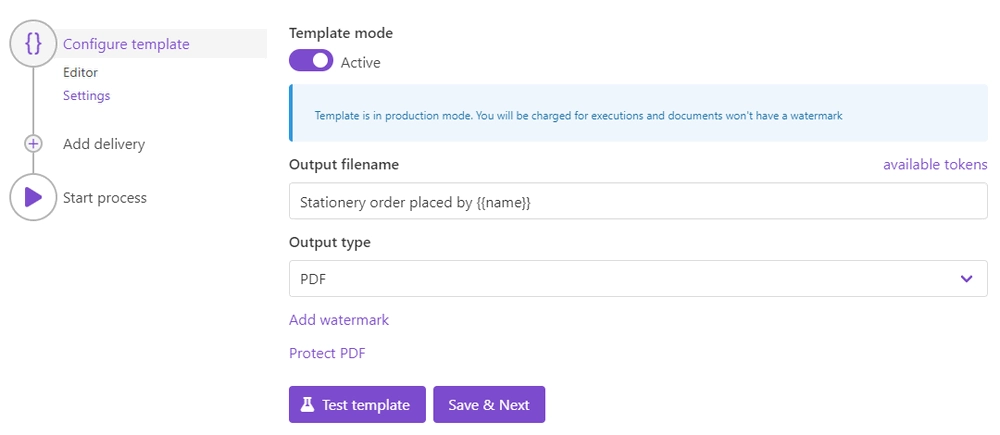
Once you’ve customized all the settings, you can test the template to see the result as we did it before.
When everything is done here, click on Save & Next to set up deliveries.
Delivery
The next step is delivery. For demonstrating purpose, we’ll store the result file in OneDrive. But there are other options.
Just set the folder’s name where the ready document will be saved.

You can configure as many deliveries as you need.
Start the Process
We will start our Process from Power Automate (Microsoft Flow).
Create a Flow
This is how our Flow looks:
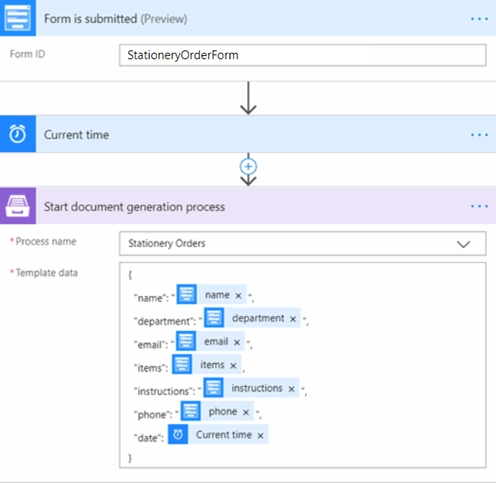
Below is a step-by-step description.
Form is submitted
We need to start the Flow every time somebody submits our stationery request form. For that, search for Plumsail Forms in Power Automate and add Plumsail Forms - Form is submitted as a trigger.
If this is your first Flow with Plumsail Forms, on this step, sign in to your Plumsail Account from MS Flow to use your forms inside Flows.
You’ll need to select the form in the dropdown list.
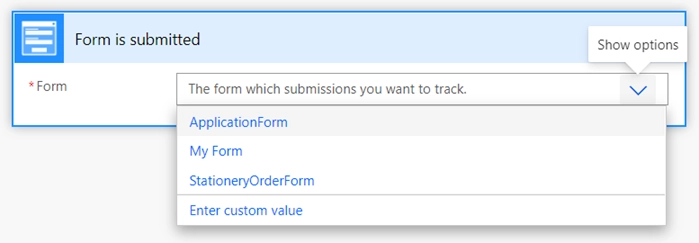
Current time
It’s a simple action to get the current date. We’ll use its output in the next step.

Start document generation process
This is the action from Plumsail Documents connector. This action is suitable for starting the Process of generating documents from a template. You can find more information about this action by visiting this page.
Using the action for the first time, you’ll be asked for ‘’Connection Name’’ and ‘’Access Key’’.
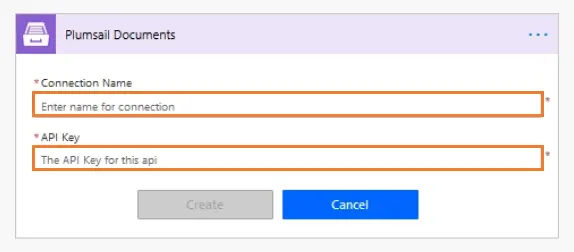
You can type any name for the connection. For example, ‘’Plumsail Documents’’.
Then create an API key in your Plumsail Account page, copy and paste it to ‘’Access Key’’ field.
The action has two parameters:
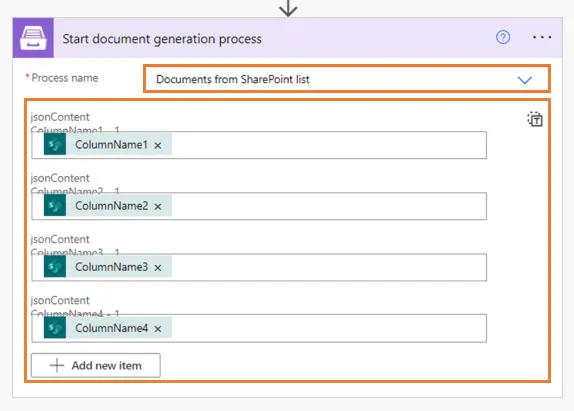
Process name. Select the process you need from available ones.
Template data. Specify source data in JSON format:
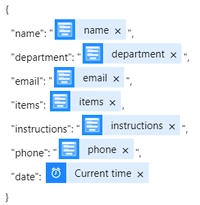
This object contains information from our form. We selected the dynamic content from the output of Plumsail Forms - Form is submitted and Current time action.
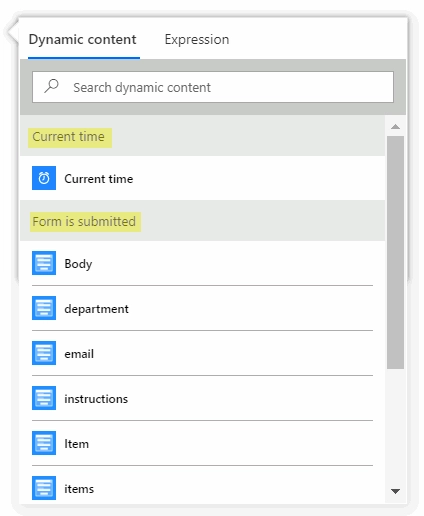
Use the ready document in Flow
You can stop on the step Start document generation process.
Steps described above are enough for generating PDFs from an XSLX template based on the Plumsail Form submission. Your result file will be saved to OneDrive in this case. See how it will look:
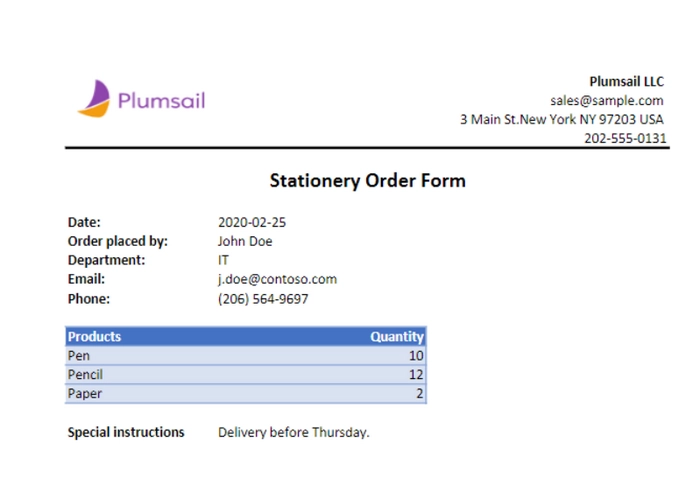
But if you need an advanced logic, it’s possible to work with the result file right in the Flow.
Here is an example of how you can send the ready document for approval.
Add an action Create an approval from the Approvals connector. Select an output of the previous step for an attachment.
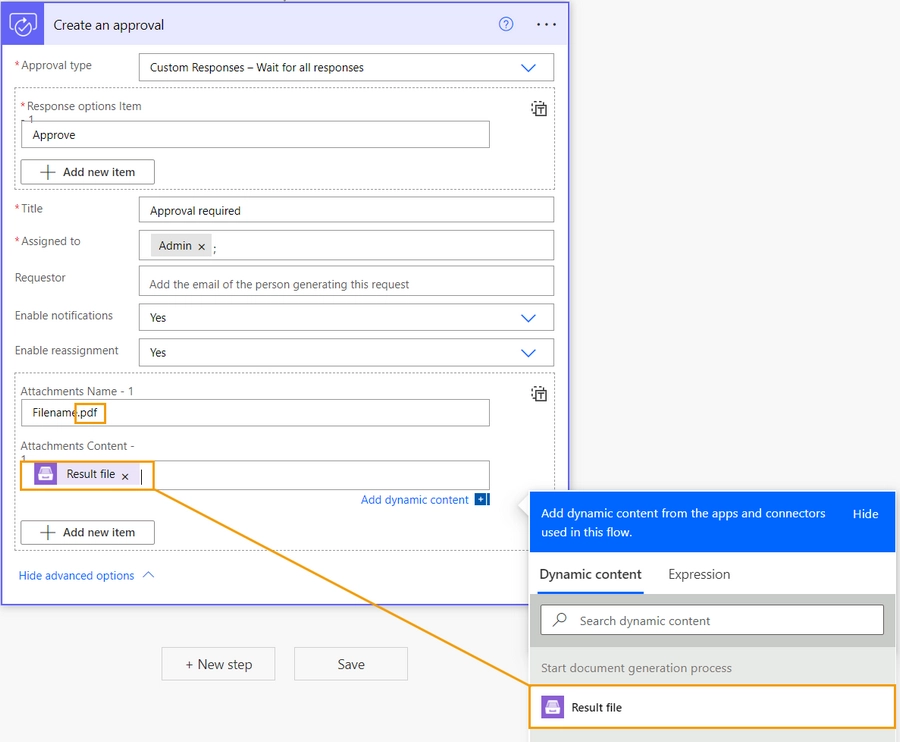
Sign up for Plumsail Documents
As you can see, it’s simple to automize the generation of documents on Plumsail Forms submission. If you’re new to Plumsail Documents, register an account and follow the steps described in the article to set the process for automatic creation of PDFs from Plumsail Forms.